Throughout the ages, the Milky Way has hung above humanity in the sky, a beautiful marvel shining steadily each night.
Nowadays, most city-bound folks rarely see the full splendor of our home galaxy stretching across the heavens. Luckily, there are photographers all over the world with the skills to show off what many skywatchers are missing.
Here, we take a look at the winners of the 2021 Milky Way Photographer of the Year competition from the travel and photography site Capture the Atlas.
Chamber of Light
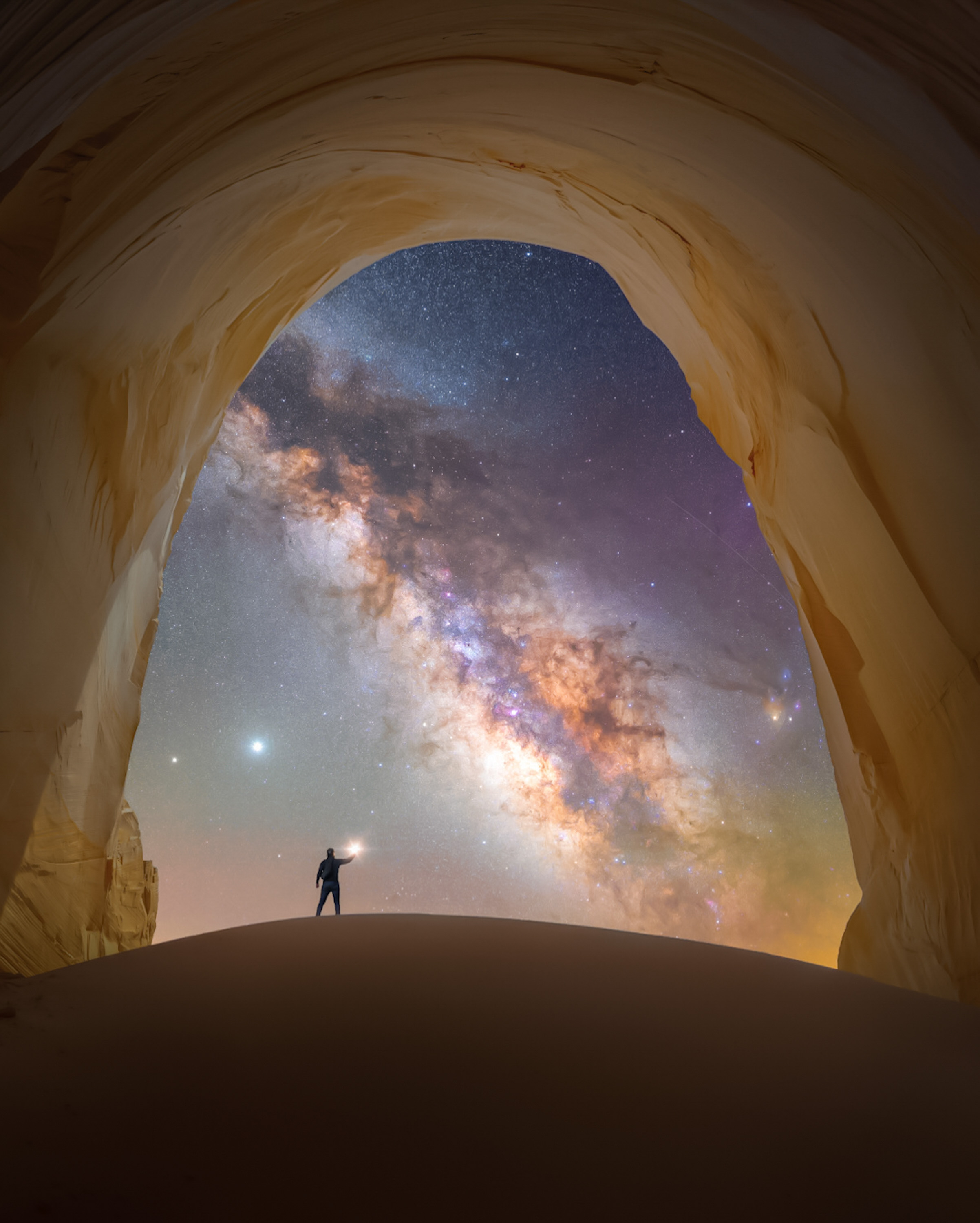
Spencer Welling
Utah, United States
A lone figure seems to hold a star in their hand as the Milky Way passes between remote cliffs at Grand Staircase-Escalante National Monument. Located in a remote part of protected land in the desert of Utah, the area provides exquisite views of the night sky.
Dragon's Lair
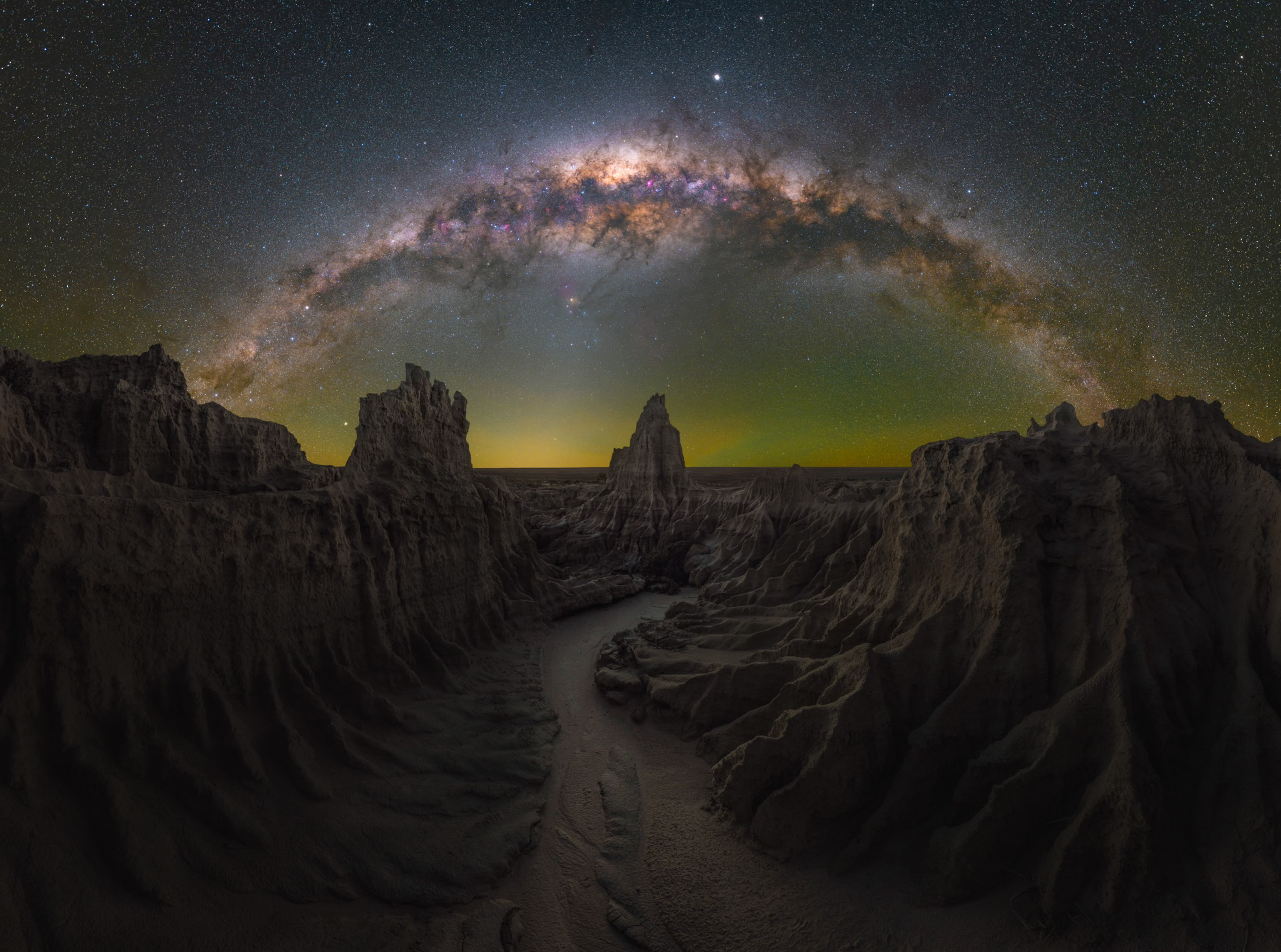
Daniel Thomas Gum
Mungo, Australia
In many cultures, our local galaxy acts as a bridge to other worlds. Here, it can be seen connecting distant peaks in a rugged landscape in a part of New South Wales, Australia, that is a 12-hour drive from Sydney. The photographer, Daniel Thomas Gum, had a picture in mind for an otherworldly "Game of Thrones"-style image, waiting for everything to line up to get the perfect shot.
Sign up for the Live Science daily newsletter now
Get the world’s most fascinating discoveries delivered straight to your inbox.
Riaño

Pablo Ruiz
Riaño, Spain
Clouds, ice, water, rocks and sky can be seen in this amazing winter composition from northern Spain. The elemental image, taken at the Riaño Mountain Reservoir, shows the Milky Way arcing over a mountain range and lighting up the night sky.
Temple of the Sun
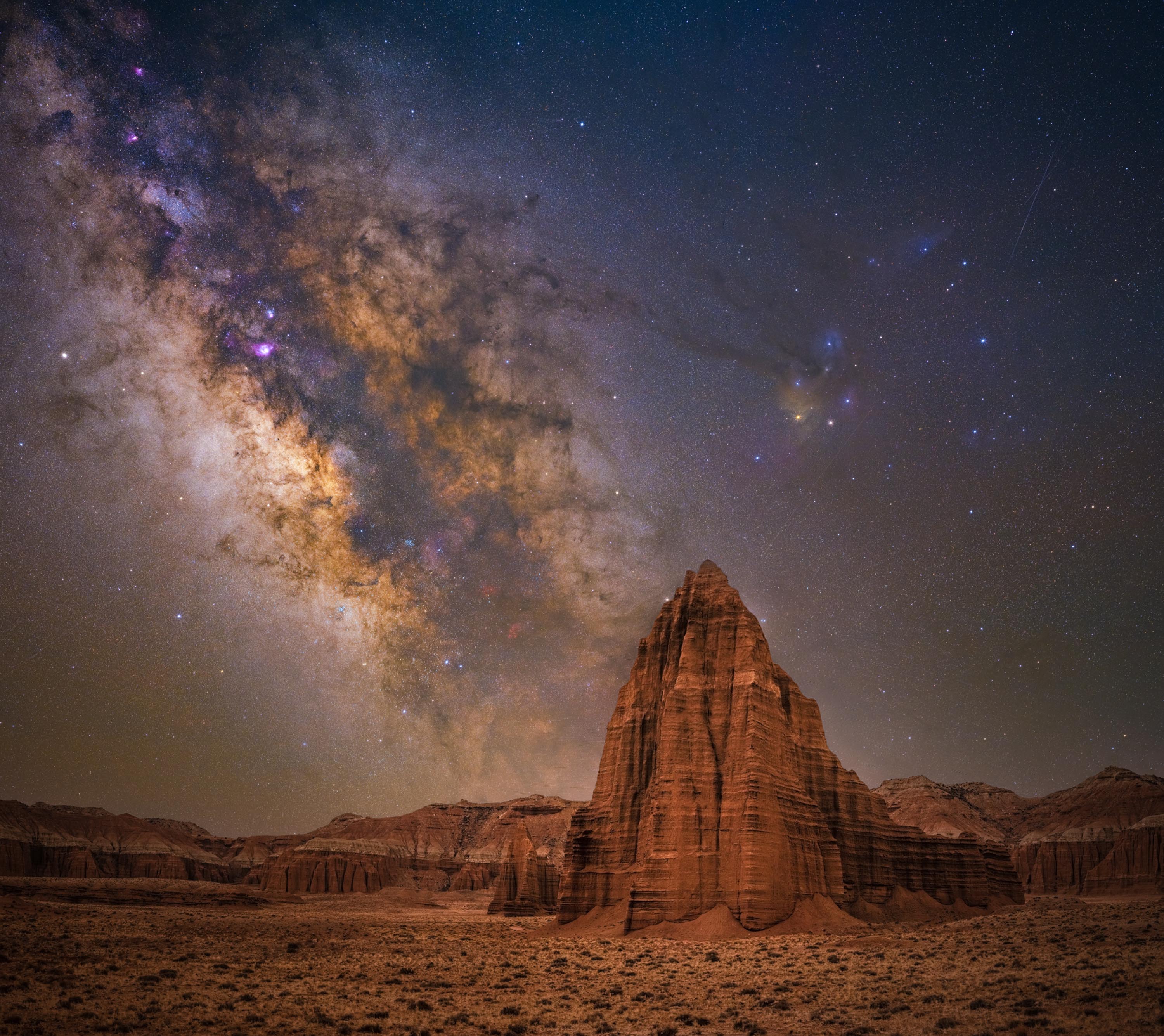
Bryony Richards
Utah, United States
In this photo, the Milky Way appears to shoot out from Capitol Reef National Park's iconic Temple of the Sun monolith in Wayne County, Utah. The natural sandstone structure got its name because it was said to remind early visitors of an ornate Gothic cathedral towering above the flat desert floor.
Rising from the Dust
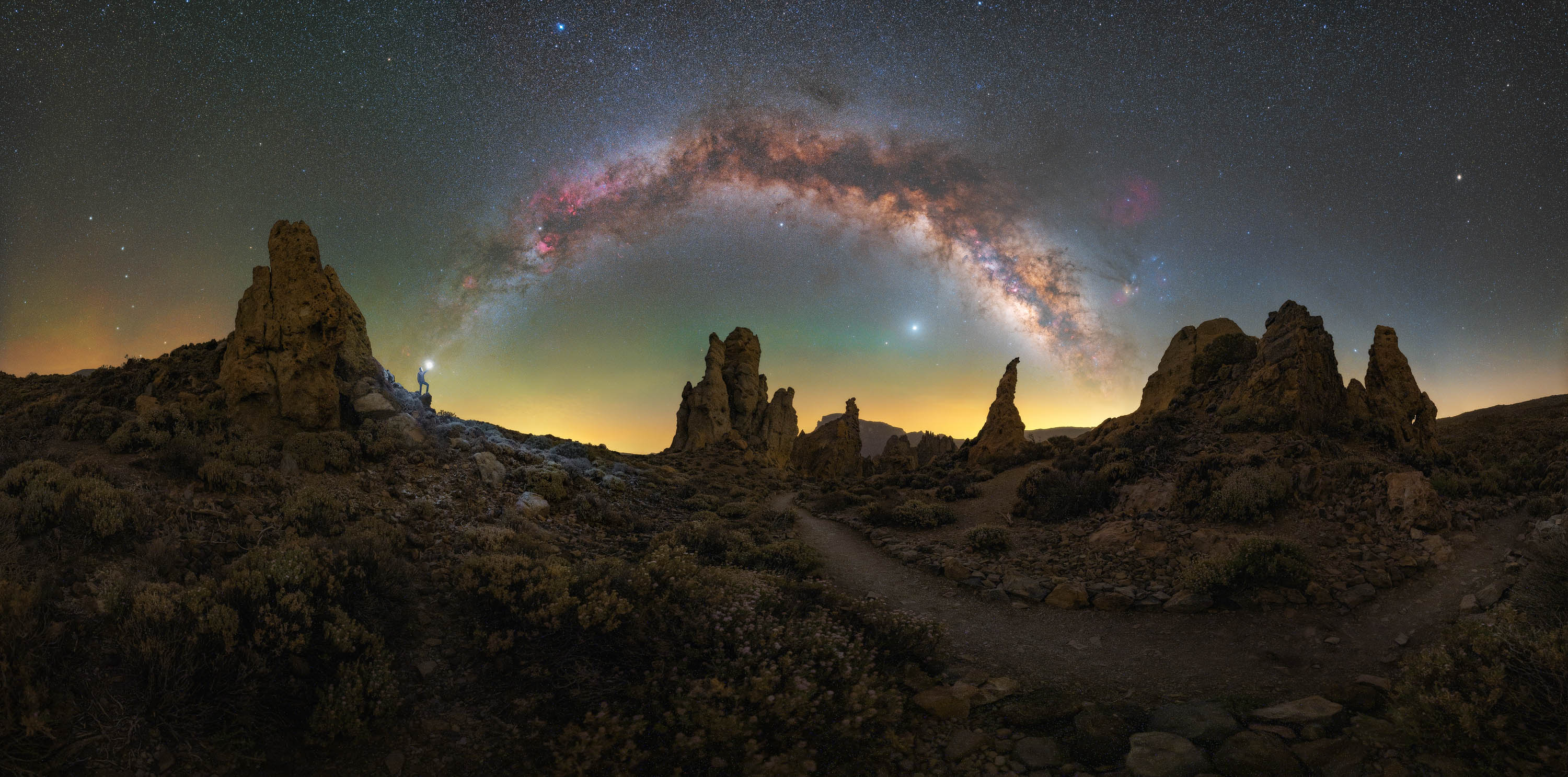
Lorenzo Ranieri Tenti
Tenerife, Spain
The rugged volcanic landscape of Teide Volcano National Park provides the perfect backdrop for the curving galaxy in the sky. The yellow glow seen near the horizon is caused by dust particles blown in a wind known as the Calima, which shoots up from the Sahara desert to the island of Tenerife in the Atlantic Ocean.
Grantecan
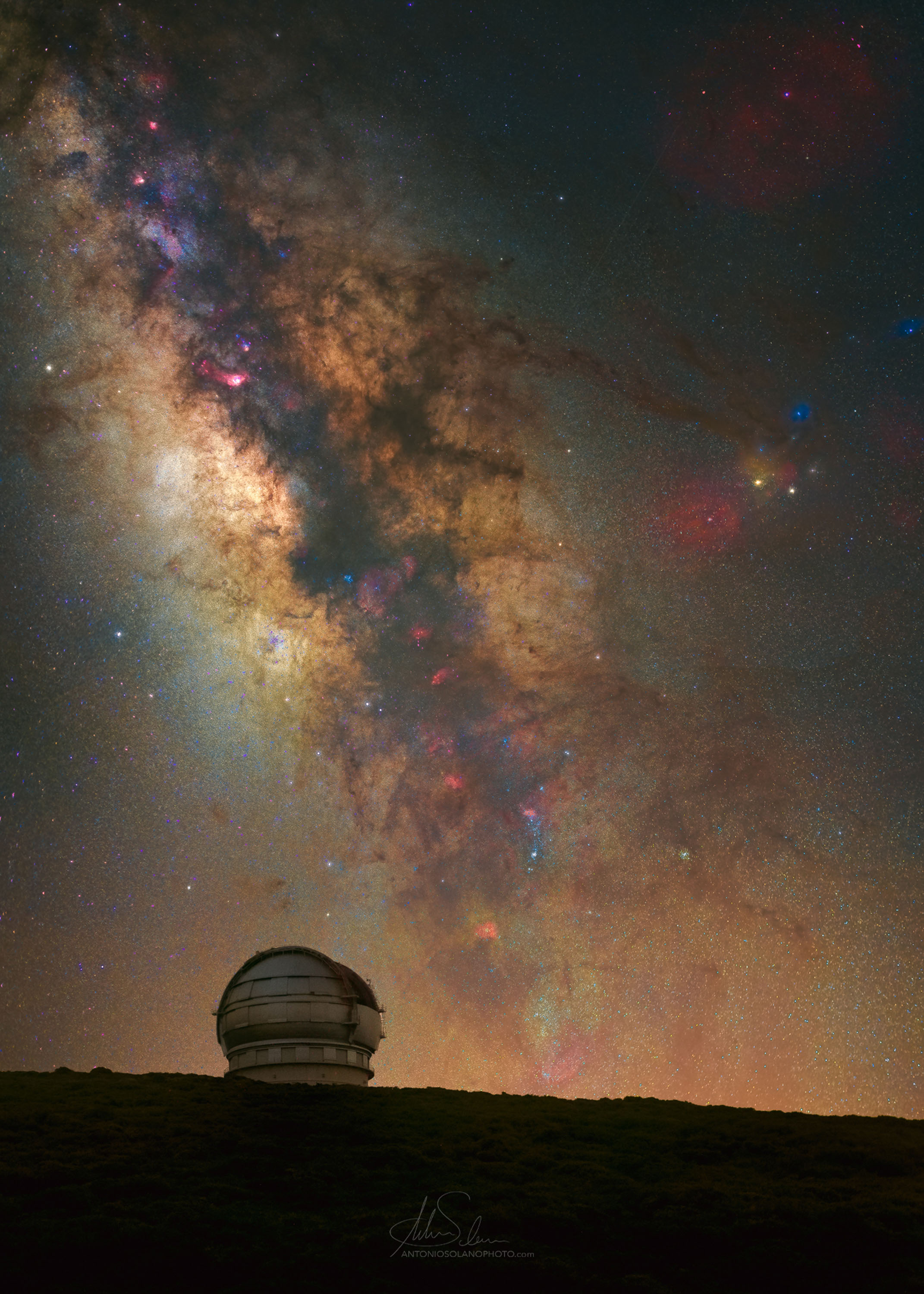
Antonio Solano
La Palma, Spain
The peak of Roque de los Muchachos ("Rock of the Boys") on the island of La Palma is one of the most coveted astronomical sites in the world, providing clear views of the night sky. Many telescope domes dot the mountain as part of the Roque de los Muchachos Observatory, one of which is seen here with the Milky Way above it.
Mt. Taranaki Milky Way
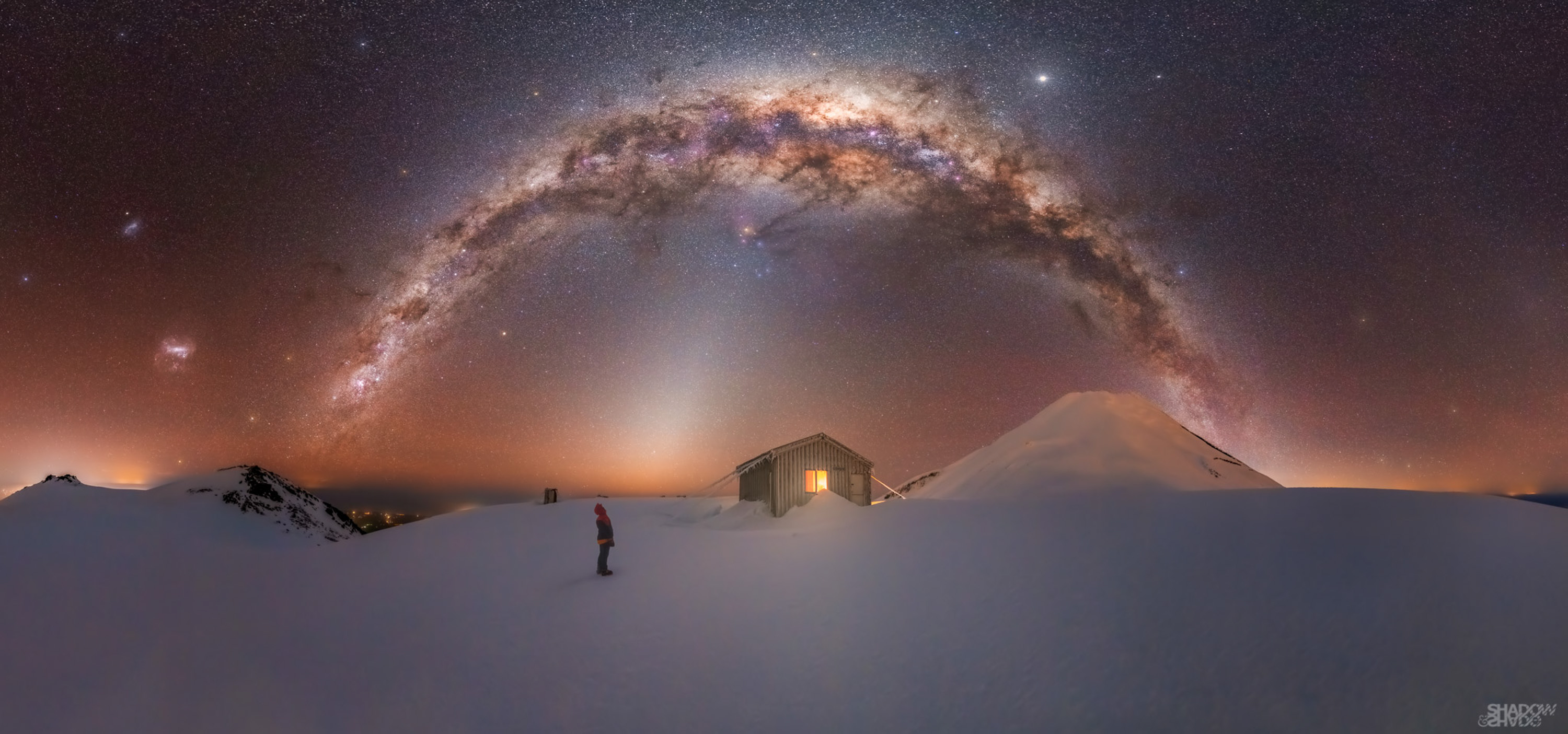
Larryn Rae
Mount Taranaki, New Zealand
The second-highest point of the North Island of New Zealand can be found on the dormant volcano of Mount Taranaki. Sticking out of the mountain's side is another dormant volcano, known as Fanthams Peak, where this shot was taken. Getting the image was a challenge, the photographer said, requiring a 4-hour climb in rushing winds to reach the icy summit.
The Watchman
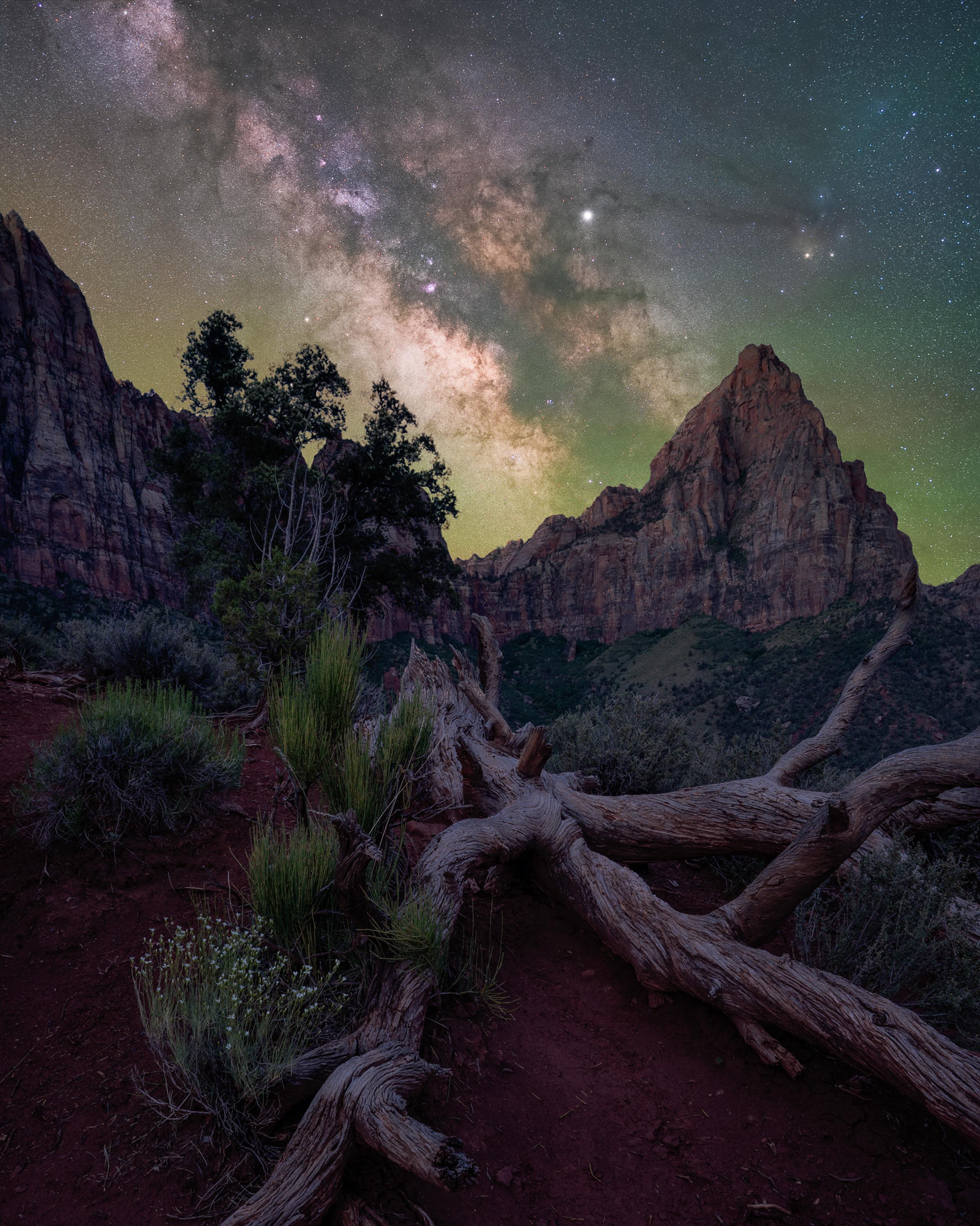
Brandt Ryder
Utah, United States
An old juniper tree can be seen in the foreground of this photo, taken at Zion National Park, in Utah. The angular sandstone mountain known as The Watchman perfectly complements both the ragged tree and the Milky Way shooting through the sky.
Volcanos and Cross
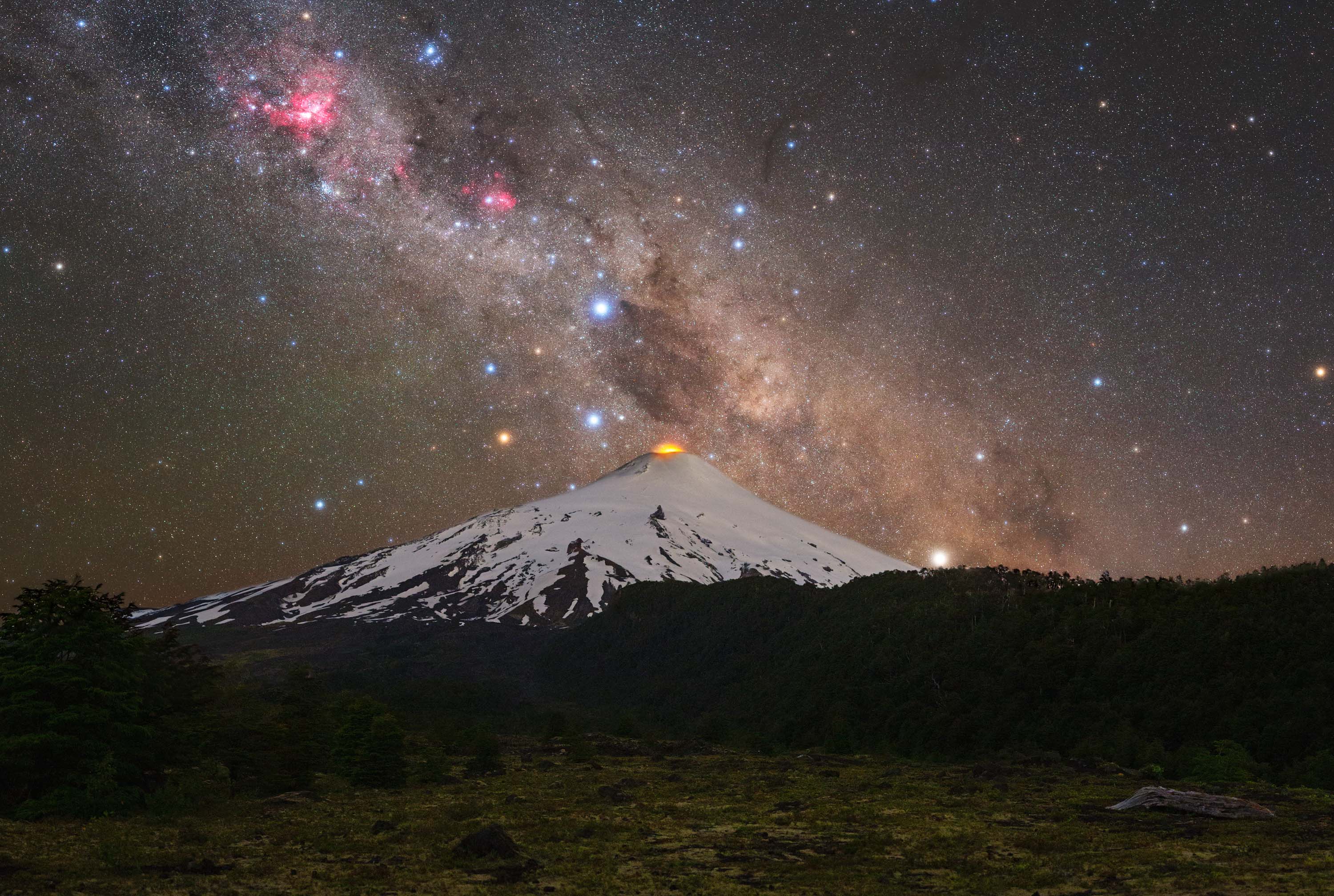
Tomas Slovinsky
Villarrica volcano, Chile
One of Chile's most active volcanoes, Villarrica, provides an amazing accompaniment to our galactic home in this photo. Features of the night sky that can be seen only in the Southern Hemisphere appear prominently here, including the Southern Cross, which hangs just above the volcano itself.
Night Lovers
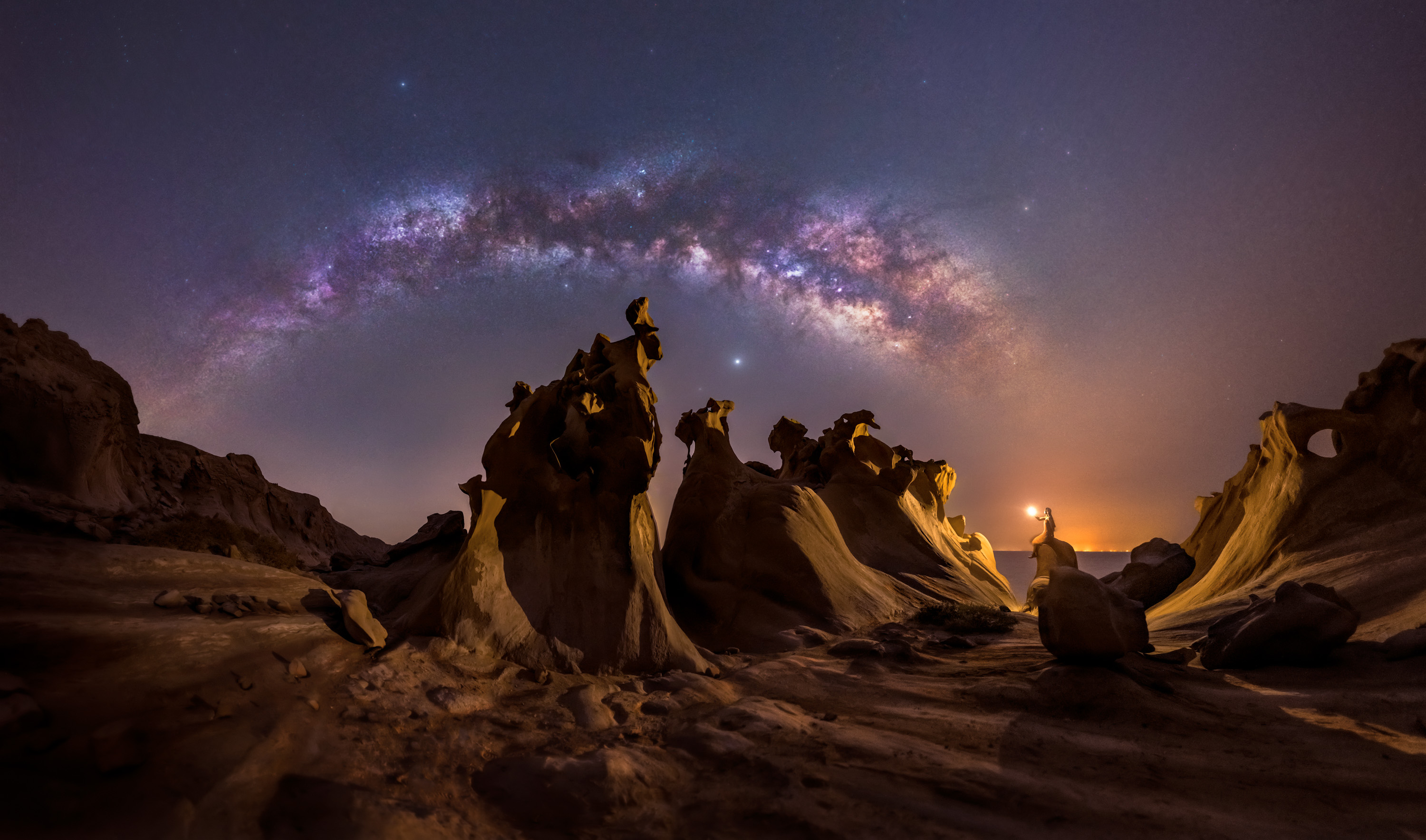
Mohammad Hayati
Hormozgan province, Iran
Surreal curving rocks rise up from a region along the southern coast of Iran near the Persian Gulf. The twisting structures almost look like lovers gazing at the beautiful Milky Way.
Paradise
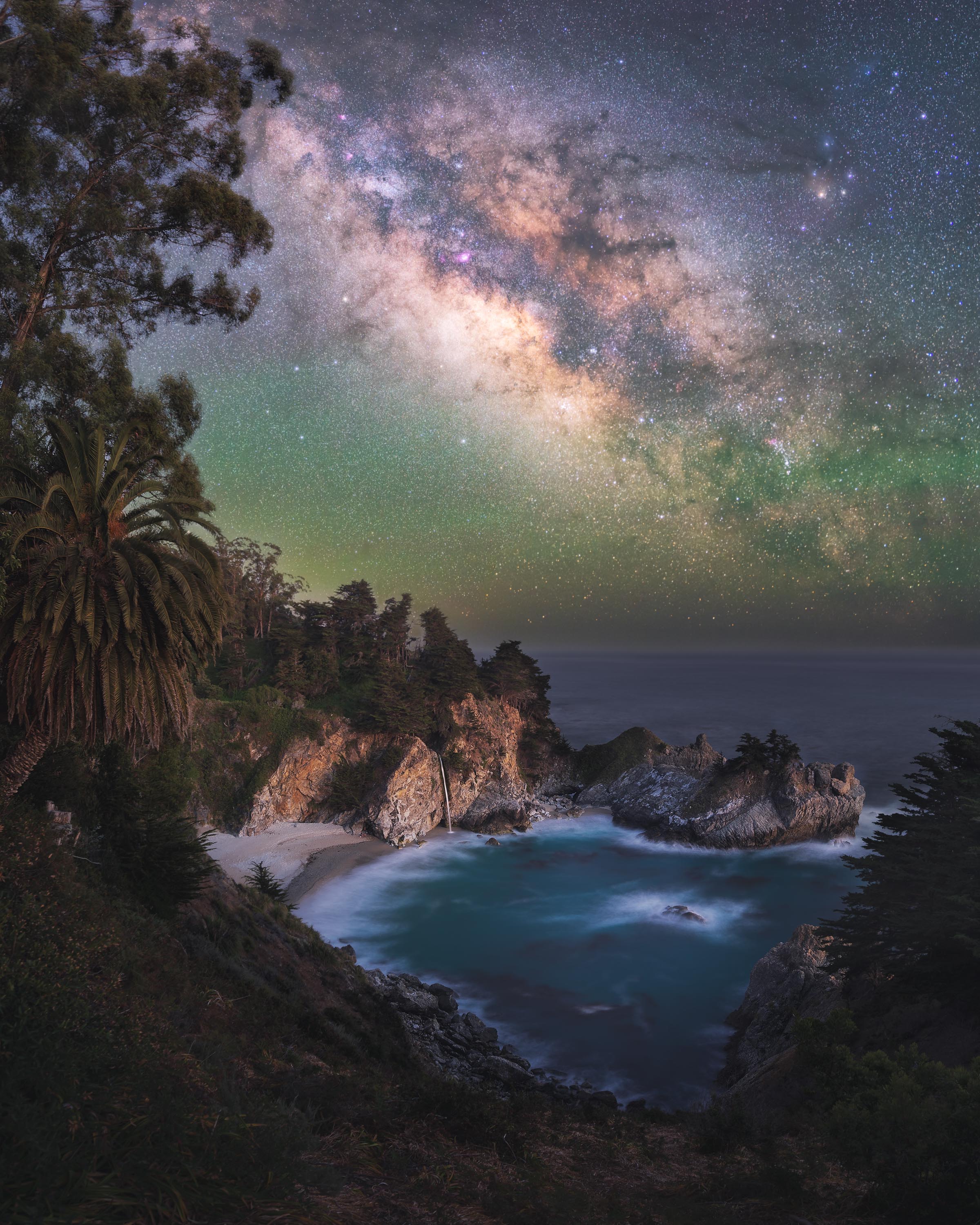
Marcin Zajac
Big Sur, California
The Pacific coast looks downright tropical in this composition from California. The blue-water cove features palm trees, dramatic cliffs and even a waterfall tumbling to the ocean beneath the night sky.
Devil's Throat
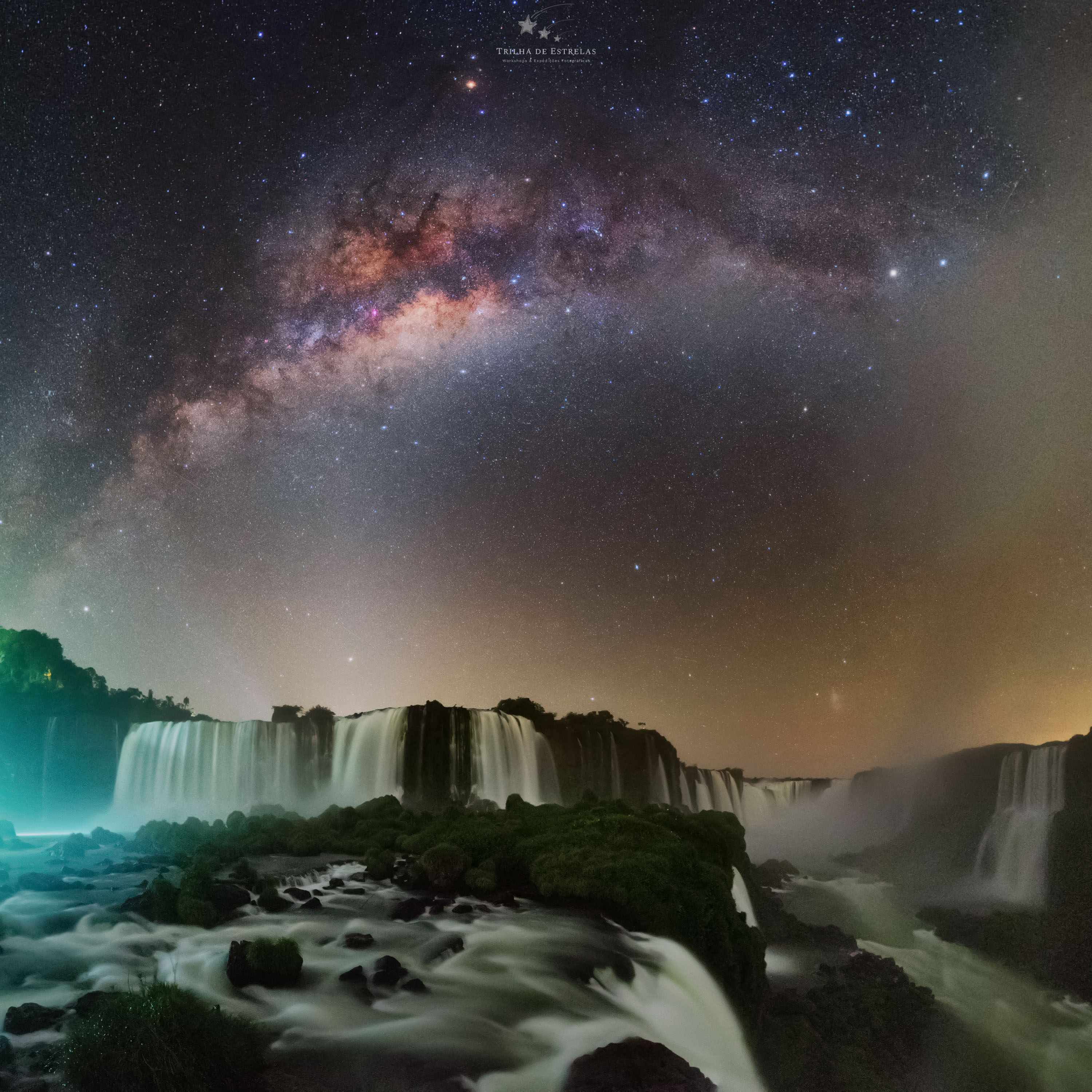
Victor Lima
Iguazu Falls, Brazil
Located at the border of Brazil and Argentina, Iguazu Falls is a complex of tumbling water that collectively makes up the largest waterfall in the world. One of the main falls, called the Santa Maria Jump, rushes in many directions beneath the river of the Milky Way in the sky.
Navajo Nights
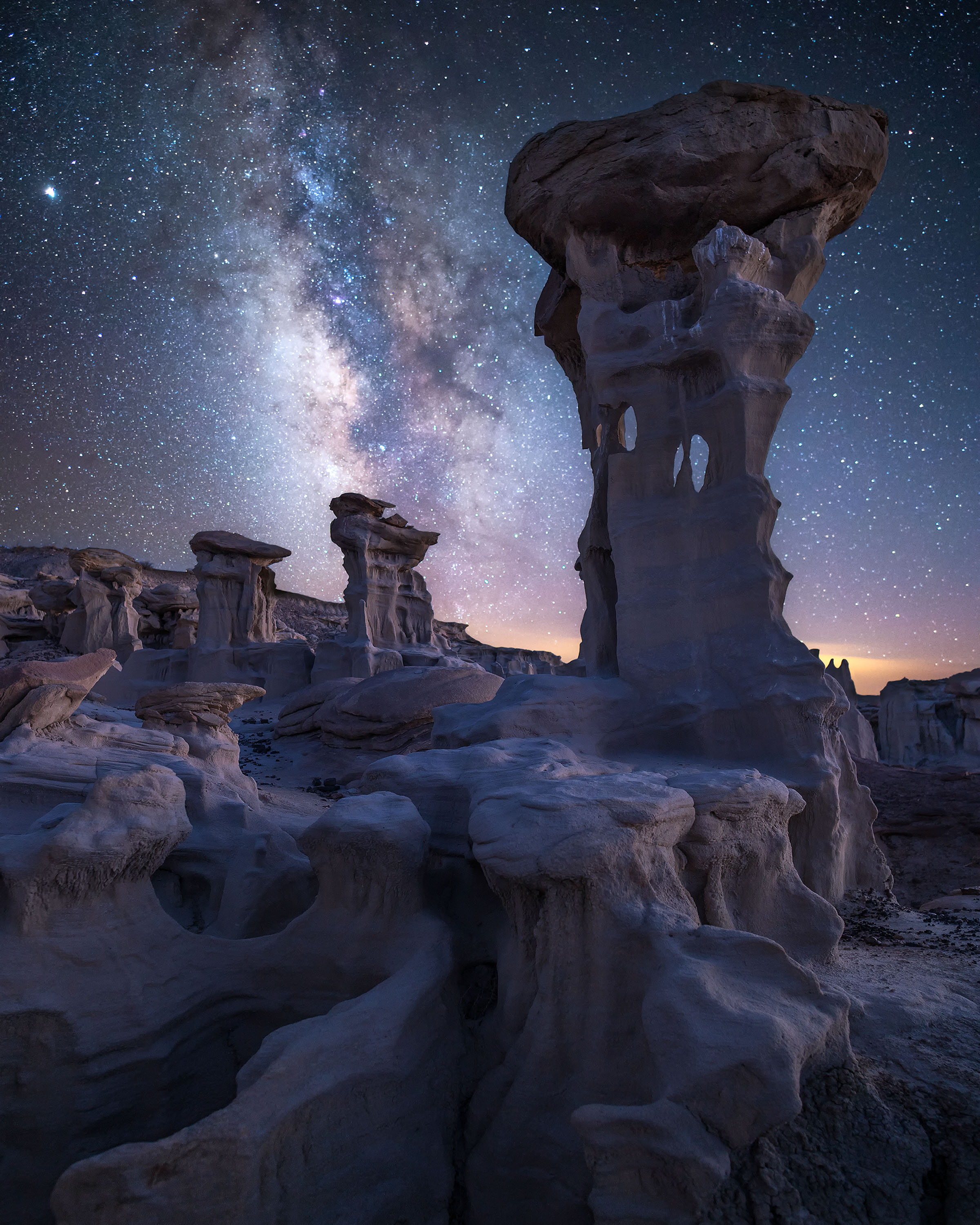
Christine Kenyon
New Mexico, United States
The Bisti/De-Na-Zin Wilderness in the southwestern U.S. looks like an alien world, with incredible rock features rising beneath the Milky Way. Translated from Navajo, "Bisti" means "among the adobe formations," while "De-Na-Zin" translates to "Standing Cranes," a reference to the crane petroglyphs found in the area.
Nyctophilia
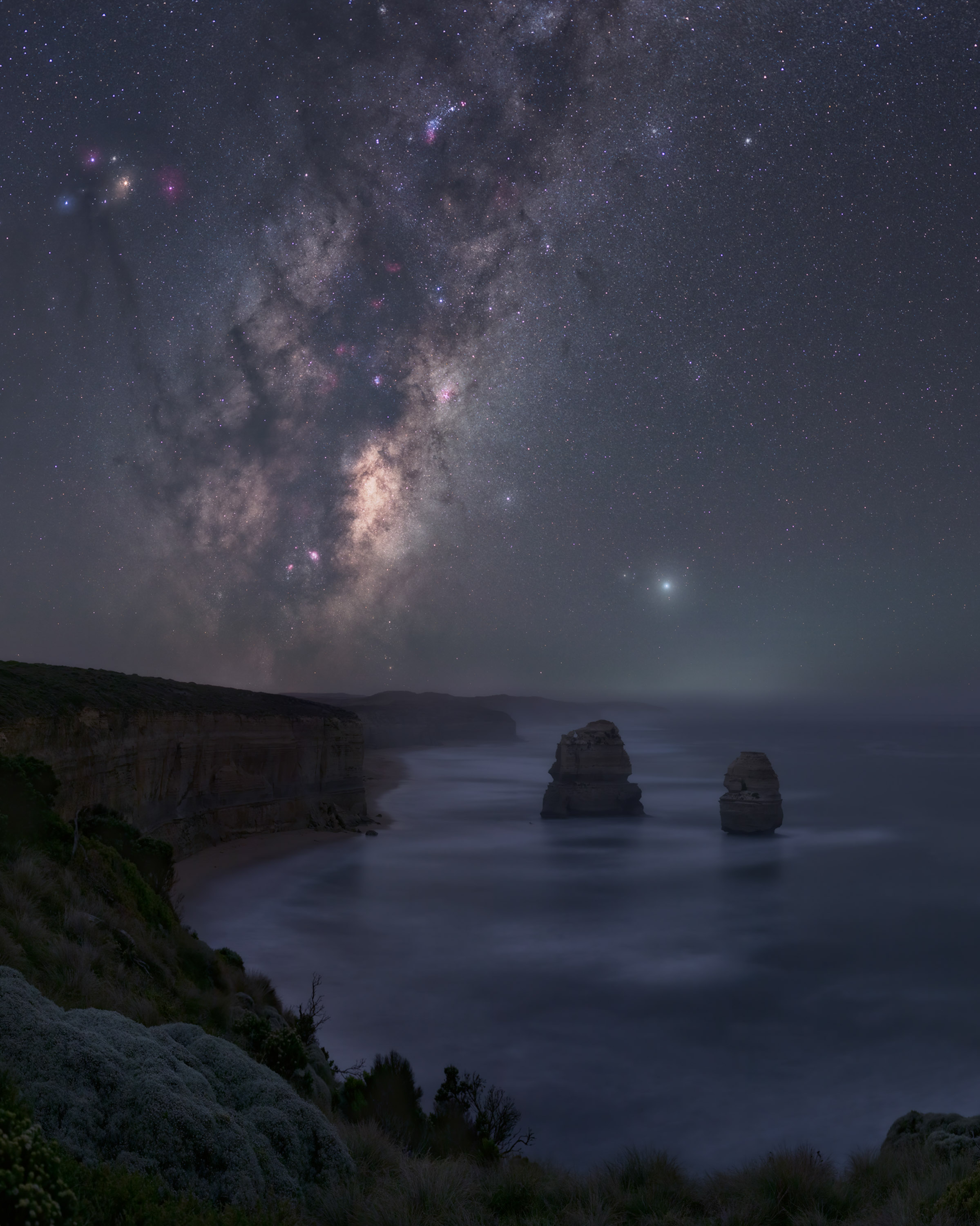
Jose Luis Cantabrana
Victoria, Australia
Two enormous rocks jut from the ocean in Victoria, Australia. "Nyctophilia" means "friend of the dark" in Greek, an apt name for this beautiful shot of the night sky.
Adk Magic
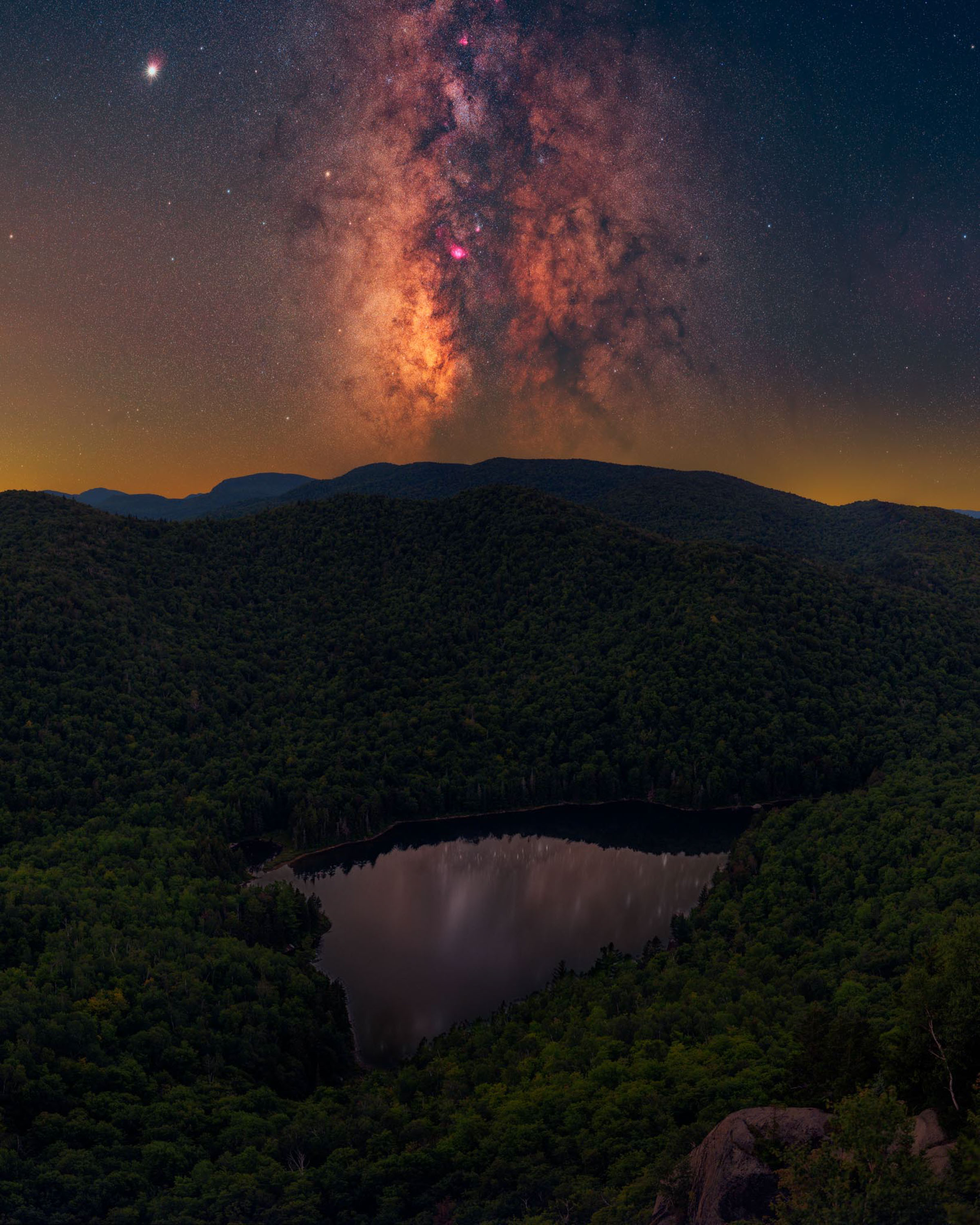
Daniel Stein
New York, United States
Tucked away in upstate New York are the Adirondacks, parts of which have been designated as "Forever Wild." Photographer Daniel Stein used the mountains' remoteness to capture this amazing image of the galaxy reflected in a small lake.
Originally published on Live Science.

Adam Mann is a freelance journalist with over a decade of experience, specializing in astronomy and physics stories. He has a bachelor's degree in astrophysics from UC Berkeley. His work has appeared in the New Yorker, New York Times, National Geographic, Wall Street Journal, Wired, Nature, Science, and many other places. He lives in Oakland, California, where he enjoys riding his bike.









